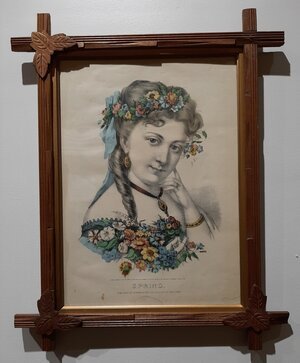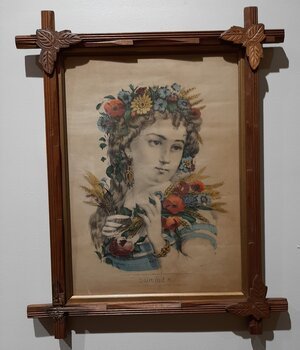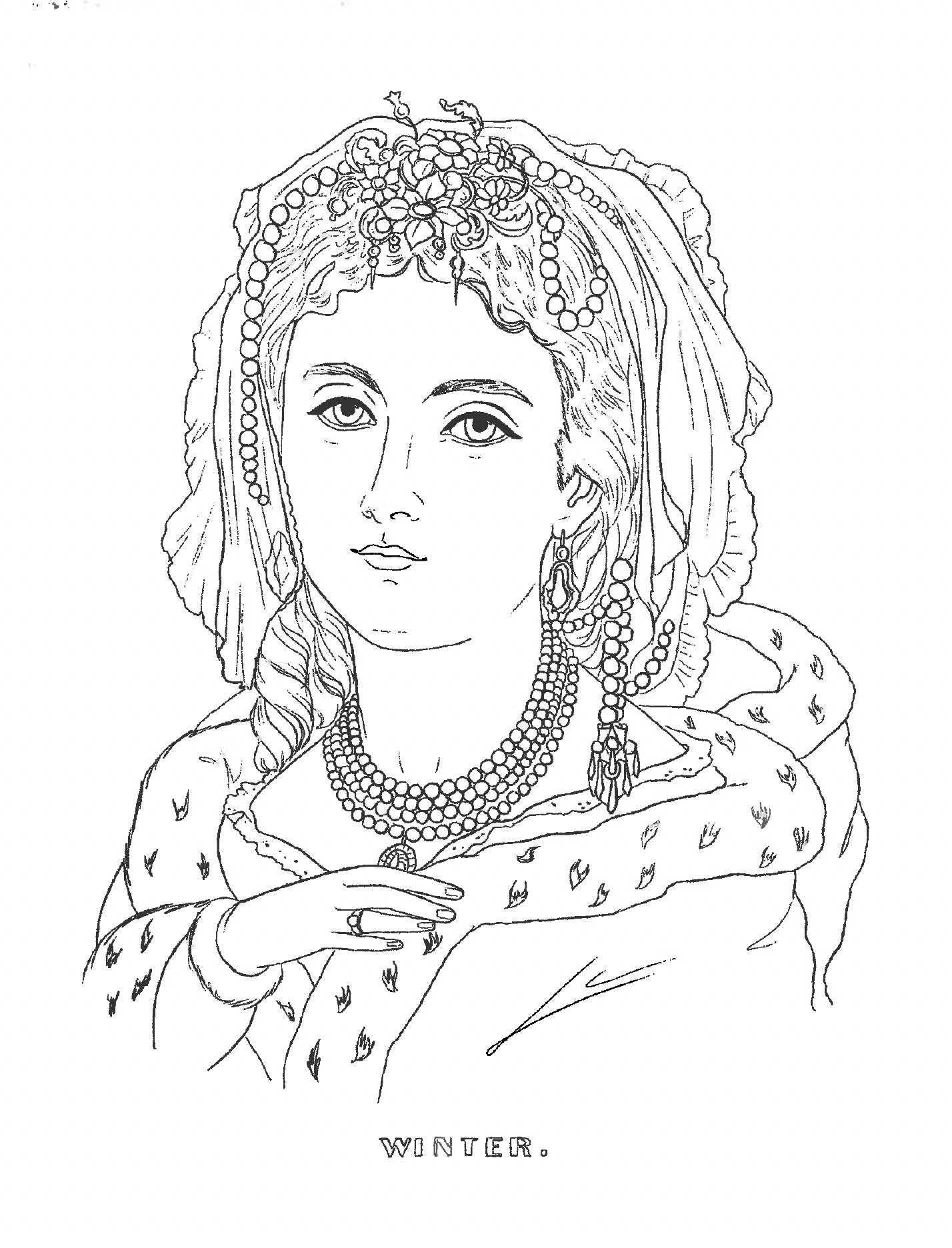April 11, 2020
Colour Your Own Currier & Ives Portrait!
1994.1.20 “Autumn”
1994.1.21 “Spring”
The Kawartha Lakes Museum & Archives has dozens of Currier & Ives prints in the collection, including a rare complete set of the Four Seasons “Girls Name” portraits from 1870.
The popular “Girls Name” portraits were produced in large quantities, from 250 designs, about 30% of their portrait works. Each of the “Girls Name” portraits were titled with a girls’ given name, normally common names like “Susan” and “Josephine”. Several portraits do not have girls’ names but a phrase like “The American Beauty” or “Pride of the West” or the names of the four seasons like the ones donated to the Olde Gaol Museum by Mrs. Jean Shields (formerly Laidlaw) in 1994.
Who were Currier & Ives?
1994.1.22 “Summer”
Currier & Ives lithographs are iconic in their style and depiction of the American people at a time when general photography was still unavailable. Nathaniel Currier, although having established himself in printing years earlier, formed a partnership in 1857 with James Ives to create the New York firm that would last 50 years, eventually under management by their sons.
The firm had a talent for producing prints quickly after events that ranged from disasters to political satire and other popular interests such as steamboat races and country sleigh rides. They promoted themselves as “Publishers of Cheap and Popular Pictures” and the prints were sold for 5 cents to $3 across the North America and Britain. Between 1840 and 1890, it published more than 7000 distinct image edition prints.
The designs were created by house staff and also commissioned from young artists of the day including Louis Maurer, Thomas Worth, and Arthur Fitzwilliam Tait. Frances Flora Palmer (Fanny F. Palmer) was responsible for the majority of the landscapes, although few of them bear her name.
How were the prints made?
1994.1.20 “Autumn”
The firm employed hundreds of people in their production line. The prints would be made by first carving the images into the printing stones, hand-printing the images to ensure the quality of the print and then colouring them by hand. A dozen or more women would colour the images, one colour to a worker, and then passing along to the next. The colours were clear and simple.
The company did not limit the number of prints so it is unknown how many exist. If there was a demand, they would pull older stones and create a new run. The stones of less popular prints would be ground down and reused as a base for a new print. If an artist today wants a high quality lithograph, they will work with a craftsman that continues to print from a stone on a hand press.
Firms like Currier & Ives, although tremendously popular, were vulnerable to the changes in fashion and collecting habits of their buyers as well as the new commercial processes. Photolithography and cheaper, faster commercial presses replaced the old hand run lithographic presses. Profits became more important than quality in mass commercial work. The majority of businesses like Currier & Ives closed by 1910, unable to compete in the new mass production markets with photographic images.
Colour Your Own
Download these colouring pages created by our summer student, Vittoria Gomes. Send us a picture of your completed colouring pages so we can share them on our Facebook page or Instagram! Read more about the “Girls Names” portraits.
Explore More
Try making your own prints by carving a design in a potato. www.metmuseum.org/metmedia/video/metkids/metkids-create/make-a-potato-print








